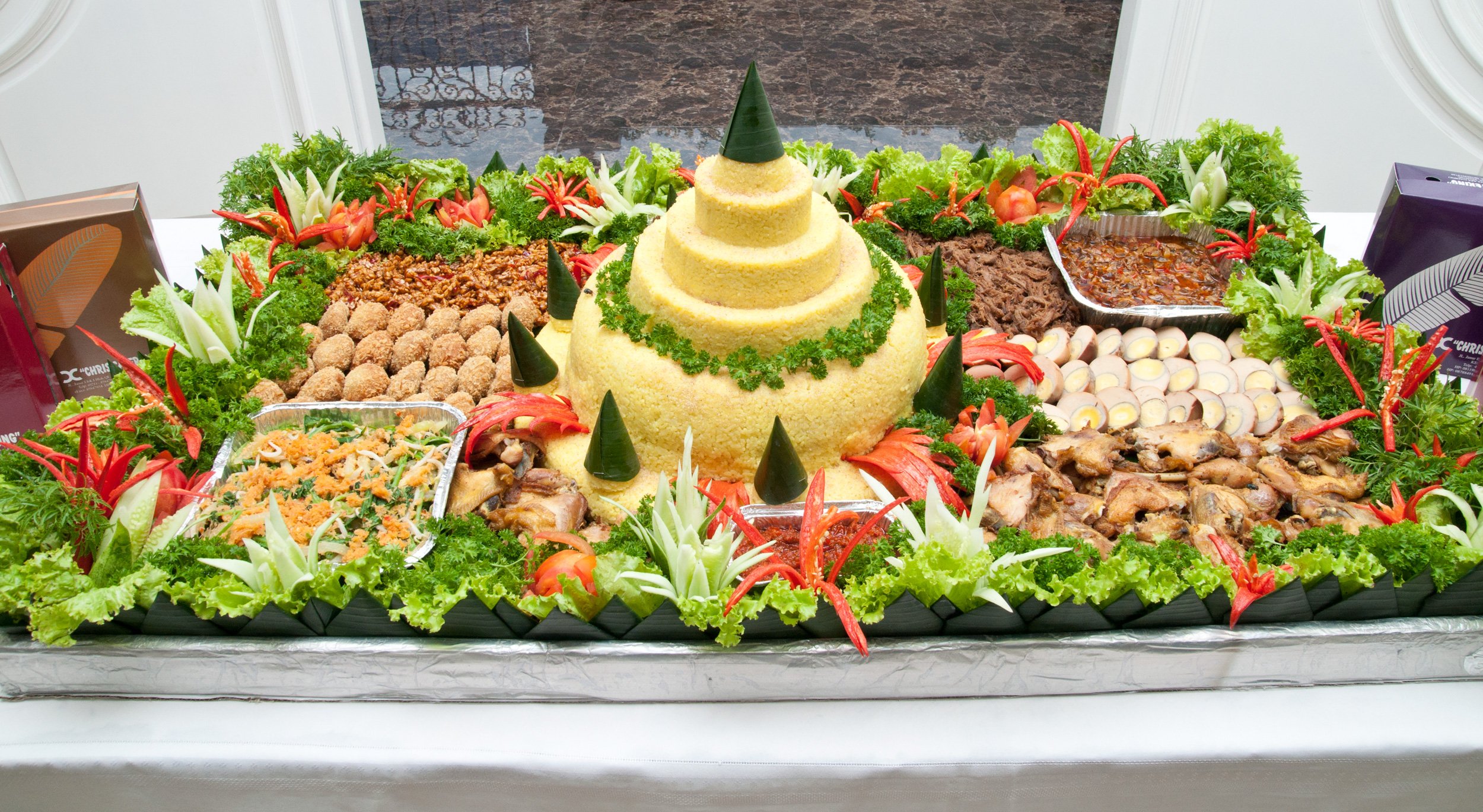Brilio.net/en -If you ever come to a ceremonial event in Indonesia, you must have seen this cone-shaped rice with side dishes and garnishes styled around it. This mountain-like rice is called Nasi Tumpeng (or Sangu Tumpeng in Javanese). This is the traditional ceremonial food only served on formal events such as birthdays, anniversaries, official launching events, and other thanksgiving events, especially in Java, Madura and Bali.
Nasi tumpeng is very highly valued and has sacred meaning behind it, and therefore should be prepared accordingly to the rules. The way our ancestors made it long time ago was all ritual. Only clean (not in menstrual period), adult women could make the rice, while men were preparing the side dishes. No one was allowed to touch or talk to the woman during the cooking, as a symbol that Mother Earth was shaping the Earth and preparing the life for humans. Nowadays, the serving of nasi tumpeng in an event means the purpose of the event is to give thanks to God Almighty.
Nasi tumpeng is usually served on a bamboo woven crock called nyiru or tampah with a banana leaf as its base. The banana leaf is decorated in such a way that it looks like the sun, which represents the God Almighty. More condiments are served on separate plates. You will find a banana leaf cover at top off the mountain-like rice and garnish made from chili peppers. The chili represents fire, and with the rice-mountain under it, this becomes a remembrance that Indonesian people live among volcanoes. There is a Javanese term that says Indonesia is as a nation that rides a dragon of fire.
Being passed down from the ancestors, every single part of nasi tumpeng also has its own meanings. The mountain-like shape symbolizes the direction of God and acts as the center of gratitude. There are many types of nasi tumpeng in Javanese rituals, such as Tumpeng Sangga Langit, Tumpeng Arga Dumilah, Tumpeng Megono and Tumpeng Robyong. Each of them also has their own meaning, all focused on the various meanings of life and used in different purpose.

The most popular type is Tumpeng Robyong, which symbolizes safety (keselamatan), fertility (kesuburan) and welfare (kemakmuran). The mountain-like rice means the true dignity (kemuliaan) and prosperity (kekayaan), while the water that flows from the mountain will give life to the plants. The plants are made out of the side dishes and shaped as robyong, which means to live and grow.
Each set of Nasi Tumpeng must contain several elements, which constitute the symbols of all the things that humans possess to present to the God Almighty. The elements are:
Elements from the soil, which are tubers such as potatoes, sweet potatoes, peanuts and soybeans,
Elements from the ground, which are vegetables,
Elements from animals, which are chicken, beef and eggs,

The types of side dishes would be different in each area and also have their own meanings. Here are some of them:

Rice means everything that we eat will become blood and flesh, so we must pick it from the clean source.
Ayam ingkung or fried rooster cooked with yellow turmeric sauce and thick coconut milk broth, as a symbol to praise God in devout (manekung) and peaceful heart (wening). This could be achieved by controlling one self and be patient. To butcher a rooster also means to avoid bad characters. The chicken must be placed facing the East.
Fried catfish is chosen because it survives in stagnant water and resides in riverbeds. This is a symbol of steadfastness, perseverance in life and being able to live in the bottom when economic situation gets tough. Nowadays people prefer to replace catfish with milkfish (bandeng) or carp (gurami).
Salted fishes (anchovies or gereh pethek) live in the sea and are always clustered in big group, symbolize unity and harmony. All the fishes are placed facing to the North, together with beef, shrimps, etc.
Egg, boiled in brown sauce instead of being fried or made as omelet, served complete with its shell as a meaning that we have to plan our steps (by peeling the shell), to work according to the plan, and to evaluate the result for perfection. This relates to Javanese proverbs, Tata, Titi, Titis dan Tatas which means that a good work ethic is the one that is planned, detailed, precise and finished. Egg also represents that God made all humans with the same degree; what differentiates them is their piety and behavior.
Vegetables, which are usually kale, spinach, beans, sprouts, seasoning sauce artocarpus camansi with grated coconut or ointment. Kale (kangkung) means jinakung or to protect and to achieve. Spinach means serenity. Beans mean to grow. Sprouts symbolize innovative thinking. Brambang (red onion) signifies the importance of weighing all decisions from all aspects. Red chili on top of the tumpeng represents fire (dilah) that enlightens us to be the useful role model for others. Kluwih means linuwih or to have advantages. Urap (vegetable with grated coconut) means urip or life, symbolizing the capacity for feeding family. Vegetables are placed facing South.
Condiments and other processed complimentary food are placed facing West.
In the past few hundreds years, Indonesian eat nasi tumpeng by using hands (dikembul). Everyone was grabbing their own portions by hands, mixing all the parts togetherwhich gave birth to the term kembul bujana. Later on the Old Order era, the late president Soeharto introduced a new style to tumpeng tradition by slicing the tip of the cone-shaped rice horizontally using a special shovel-like wooden spoon. The rice-slicing ritual is usually conducted by the most respected person or an elder then followed by all of the audience.
(brl/tis)